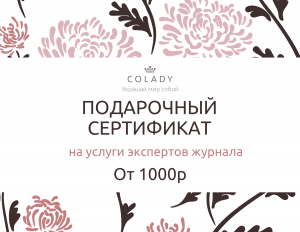Spiral gymnastics from twist therapy – basic rules and a set of exercises
In 2002, the Korean professor Park Jae Wu created a unique method of treatment that instantly won worldwide recognition. “Twist-therapy”, due to its accessibility, naturalness and ease, immediately found many fans around the world. How does this gymnastics differ from others, and what do you need to know about it?
The content of the article:
The benefits of spiral gymnastics – are there any contraindications?
The basic idea of spiral gymnastics is a theory about the close interaction of 4 forces directly involved in every natural phenomenon, including the work of the human body – this is hetero (extension) and neutro (rotational), as well as neuto (flexion) and homo (natural).
Basic, according to the scientific justification of the professor, are precisely “neutro”. According to the doctor, this system of movements has the most miraculous effect on the body.
Video: What is Spiral Gymnastics?
What does spiral gymnastics give?
- Restoration of energetic harmony in the body, thanks to the activation of specific areas of the direct spiral system in the body and replenishment of the lack of “neutro” energy.
- Relaxation of muscles and release of joints.
- Positive changes in blood circulation, in the conduction of nerve impulses and for receptor internal sensitivity.
- Rapid blocking of painful manifestations.
- Help in straightening the position of the joints.
- Balancing the nervous system.
- Increasing the capabilities of the body.
- Strengthening the cardiovascular system and muscles.
- Relief from acute pain (approx. – in any part of the body).
- Successful fight against chronic diseases.
- Elimination of stress, panic attacks, emotional disorders, tension and fatigue.
- Decrease in pressure with hypertension.
- Restoration of blood circulation after sedentary work.
- Strengthening the spine.
- Weight correction and getting rid of extra pounds.
- And even the recovery of bedridden patients.
The advantages of gymnastics:
- Simplicity in execution.
- Fast effect.
- Applicability at any age and in almost any condition.
- Physiological performance. That is, exercise is stress-free for tissues and organs.
- A minimum of physical activity.
- Versatility (but taking into account the characteristics of each person).
Indications for gymnastics
Most often, exercises are prescribed when …
- Dyskinesia of the biliary tract.
- Diseases of the gastrointestinal tract (and after hepatitis).
- Poor posture and spinal problems.
- VSD (including the one that accompanies headaches).
- PMS.
- Visual impairment including astigmatism and myopia.
- Emotional instability.
- Chronic fatigue syndrome.
Twist gymnastics is recommended for young mothers and retirees, students and schoolchildren, children and everyone else who wants to be vigorous and healthy.
Contraindications
Considering that all exercises are performed exclusively in a comfortable range without a heavy load on the joints, there are simply no contraindications for gymnastics.
Twist therapy is available to everyone!
General rules for performing twist gymnastics
As the professor who created this miracle gymnastics said, he only discovered it, but Mother Nature herself created it (“everything has already been created before us!”).
Today, thousands of people around the world playfully and with a smile (this is an obligatory moment) master simple “twist” exercises, getting rid of accumulated “sores” and prolonging their lives.
What to Remember About Spiral Gymnastics?
- Age. There are no restrictions here. Both a small child capable of performing exercises and a person of age can be engaged.
- Class time. Twist therapy will not take you much time – 3-5 (maximum 15) minutes in the morning and in the evening are enough. But every day!
- What to do? Anything! If only clothes do not restrict your movements and do not interfere with normal blood circulation.
- Where to study? Wherever you want – at home, at work during breaks and even on the street.
- What exactly does this gymnastics train? As individual parts of the body (legs and hips, neck, arms, etc.), and the entire body as a whole.
General rules of gymnastics
They are as simple as the exercises themselves.
- Exercise with force is not recommended.
- Sudden movements are unacceptable – only smooth and soft.
- When painful sensations appear you should shorten the training time and reduce the amplitude of the exercises. How to get rid of muscle soreness after exercise?
- Amplitude of exercise (twists, bends and turns) increases gradually according to your capabilities. Entry and exit from each exercise should also be smooth.
- For beginners you should first decide on the type of gymnastics you need. For example, “hetero” is a standing exercise, neuto is lying down, and homo is sitting. In accordance with the preferences (and the severity of the existing diseases), the choice is made.
- More difficult exercises should be mastered only after mastering the easy, initial (and directly receiving the results of gymnastics).
- Every stage of the class is accompanied by a smile!
- It is recommended to perform at a time the number of exercises, a multiple of 4. That is, from 4 to 16 approaches. On the 1st approach – warm-up, soft and slow, and then – an increase in the “power” of the exercises.
- Exercise is carried out 2 hours before meals. or 2 hours later, in order to avoid overloading the cardiovascular system. You should first get acquainted with the basics and rules of fitness nutrition.
- It is undesirable to start classes immediately after sleep. First you should wash your face and at least slightly awaken the tired muscles.
- An extremely important point is the mental state during classes… Therefore, she studies with a smile!
- It is with a smile that health, harmony and success come to us. Of course, a sincere smile is needed, from the heart. Therefore, we think about the good, remember the pleasant moments of life, smile and … enjoy the lessons.
The whole range of spiral gymnastics exercises on video
Video: Spiral gymnastics exercises – 1, 2, 3, 4 lessons
A standard set of therapy for beginners in the “standing” position:
1st stage – Neito
- Twisting movements of the body and arms to the left (approx. left twist) and to the right (approx. right twist).
- Neuto movement (from 1st to 4th). From the “standing” position, facing the rising sun: put your hands down (freely), smile, take 3 deep breaths. Then for the hands (and then the whole body) – first the left twist, then the right, then again the left and right.
- Hetero movement (5th to 8th). With arms, head and body – left twist in the “left-up” direction and the right twist in the “right-up” direction.
- Homo movements (9th to 12th). With arms, head and body – left twist in the “left-down” direction and right – “right-down”.
- Neutro Movement (from 13th to 16th). With the hands located at the top parallel to each other, we describe the “infinity” sign. Move the arms in the direction “left”, then “right”, changing the direction of the twist for the hands from left to right.
2nd stage – Hetero
- Neuto movement (from 1st to 4th). Hands at shoulder level. We make a left twist with them (and with the body), then right, then left again and right again.
- Hetero movement (5th to 8th). With arms, head and body – left twist in the “left-up” direction and the right twist in the “right-up” direction through the center-down position.
- Homo movements (9th to 12th). With arms, legs and body (slightly bent position) – left twist in the “left-down” direction and the right twist in the “right-down” direction.
- Neutro Movement (from 13th to 16th). Draw the infinity sign again with the hands with maximum amplitude – left and right, changing the direction of each twist from left to right.
3rd stage – Homo
The essence: diagonal movements with a reverse hand twist. That is, performing a right twist with your hands while turning the body to the left and a left twist when turning to the right.
- Neuto movement (from 1st to 4th). Twisting movements of the head, body and arms in the direction “left-forward-down” and in the upper right-back direction. The hands moved from top to bottom during the connecting movement change the direction of the twist 2 times: from the right to the left twist in the middle of the diagonal, as well as performing the right twist at the end of the diagonal while in the left lower-forward position. The position of the hands after the end of these movements is the right upper-back position.
- Hetero movement (5th to 8th). Twisting movements of the body, head and arms in the left upper-posterior direction and in the right lower-anterior direction. When the hands are moved to the left upper-back position, they perform a right twist, and when moving to the right lower-front position, they perform a left twist.
- Homo movements (9th to 12th). Twisting movements of the body, arms and head in the direction “left, up, forward” and “right-down-back.” When the hands move from the 1st direction to the 2nd, the twist changes – from right to left.
- Neutro Movement (12th to 16th). Twisting movements of the body, arms and head in the directions “left-down-back” and “right-up-forward”. In the process – a change of hands from the right twist to the left.
4th stage – Neutro
- Neuto movement (from 1st to 4th). Performing 2 left-sided and 2 right-sided twist-movements of the head, body and arms, with parallel movements of the latter.
- Hetero movement (5th to 8th). Rotational twist movements of the hands in the front plane – left-sided and right-sided (2 each).
- Homo movements (9th to 12th). Performing a left twist with the body and head with simultaneous rotational movements of the arms – diverging to the sides from each other. Further – the execution of a right twist with the body and head, with the hands – converging rotational movements towards each other.
- Neutro Movement (12th to 16th). Performing rotational movements with the hands in the front plane – 2 converging and 2 diverging.
And do not forget that smiling during the class is half the battle!
Have you ever done spiral gymnastics? Share with us your impressions of her!
What to give a friend?
Gift Certificate! You can give it to your loved one or use it yourself.
And we also give away a certificate for 3000 rubles every month. among new email subscribers. Subscribe!
Select a certificate in the store
Visit Bologny for more useful and informative articles!




